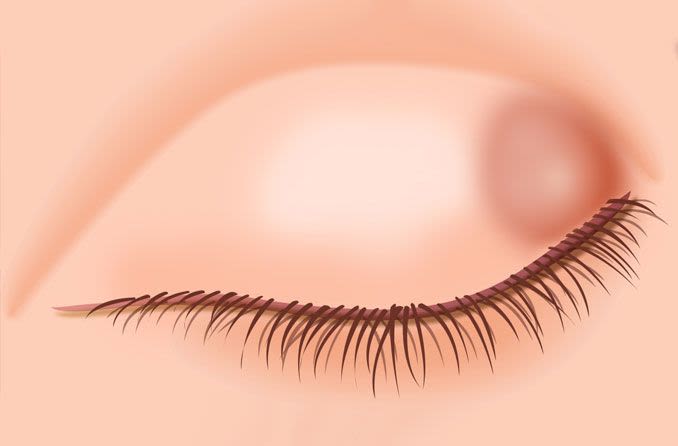Chalazion: Causes and treatments of eyelid bumps

Find an optician near you
Find Eye DoctorA chalazion is a painless bump on your eyelid. It can affect the upper or lower eyelid.
Chalazia (plural for chalazion) result from healed internal styes that no longer are infectious. These cyst-like eyelid bumps form around an oil gland within the lid and can cause red, swollen eyelids.
The contents of a chalazion include pus and blocked fatty secretions (lipids) that normally help lubricate the eye but can no longer drain out.
Many chalazia drain, resolving on their own. You can help this process along by applying warm compresses to your eyelid. Gently massaging the lid can help, too.
But some chalazia persist for more than several weeks and grow large enough to become cosmetically unappealing.
A large chalazion may press on the cornea, temporarily causing astigmatism and blurry vision.
What causes a chalazion?
It's often impossible to know what causes a chalazion. Risk factors include blepharitis and rosacea.
People with rosacea — characterised by facial redness and swollen bumps under the skin — are prone to have certain eye problems such as blepharitis and chalazia.
Rosacea can affect eyelids, the eye's thin outer membrane (conjunctiva), the clear eye surface (cornea) and the white of the eye (sclera).
Rosacea that affects the eye and surrounding tissues is called ocular rosacea.
Causes of rosacea can be difficult to pinpoint, although environment and inherited tendencies are likely factors. Certain microorganisms living in or near eyelash roots also may exacerbate inflammation around the eye.
How is a chalazion treated?
If you develop a chalazion, see an optician to determine the best way to get rid of this annoying bump on your eyelid.
In addition to providing instructions on how to apply warm compresses to your eyelid to help get rid of an eyelid bump, your optician may prescribe a topical medication. If you are prone to blepharitis, instructions for routine cleaning of your eyelids also may be given.
In some cases, even oral medications may be recommended to reduce risk factors for getting chalazia.
The most commonly prescribed oral medicines for blepharitis (and meibomian gland dysfunction) are antibiotics such as doxycycline.
Topical and oral antibiotics usually are ineffective as direct treatments for chalazia, which have no active infectious component that would require this kind of approach.
Small, inconspicuous eyelid bumps may require no treatment at all. However, some blockages causing chalazia do not clear up on their own. These may cause the eyelid bumps to be persistent or even grow larger.
In the case of a bothersome and persistent chalazion, your optician may recommend a simple in-office surgery to excise it.
An eye surgeon will use local anaesthesia to numb the area before making a small incision, typically from underneath the eyelid to clear the contents of the eyelid bump without visible scarring.
An alternate procedure involves injecting the chalazion with corticosteroid to get rid of the bump on your eyelid. A potential side effect of steroid injection is lightening of the surrounding skin, which can be more problematic in dark-skinned people.
In cases in which a chalazion recurs in the same part of the eyelid or has a suspicious appearance, the removed tissue may be sent to a laboratory to rule out cancerous growth. Fortunately, most bumps on eyelids are benign and harmless.
WHAT'S THE BEST WAY TO GET RID OF YOUR CHALAZION? Find an optician near you and get expert advice and recommendations on treatment.
Page published on Sunday, 24 May 2020






